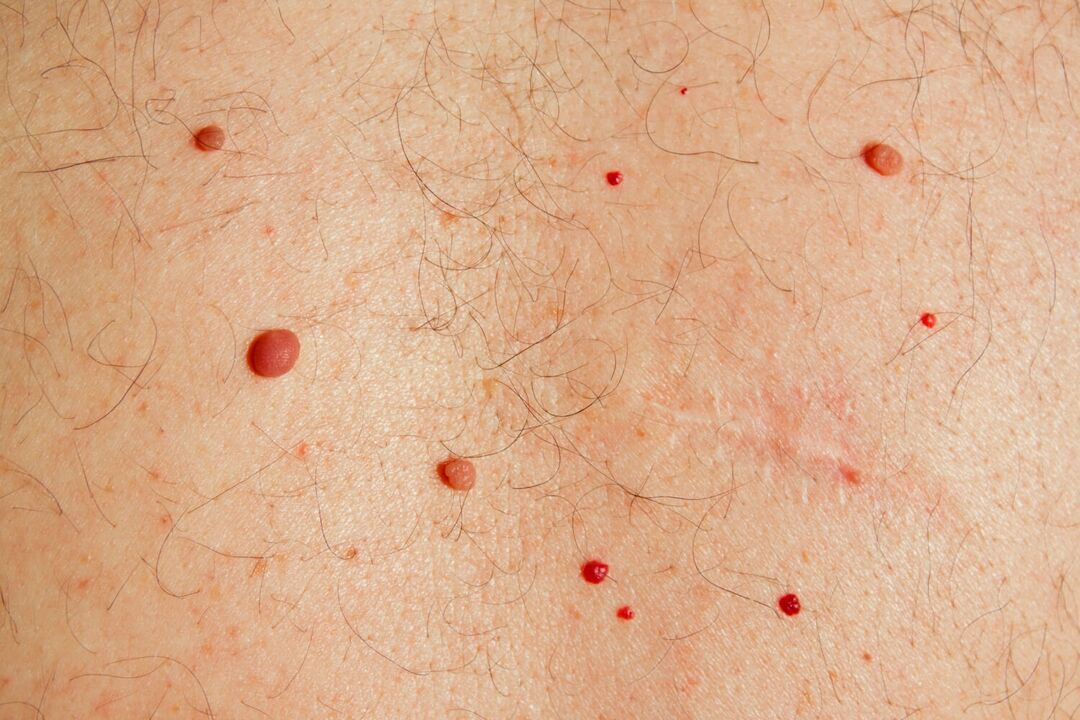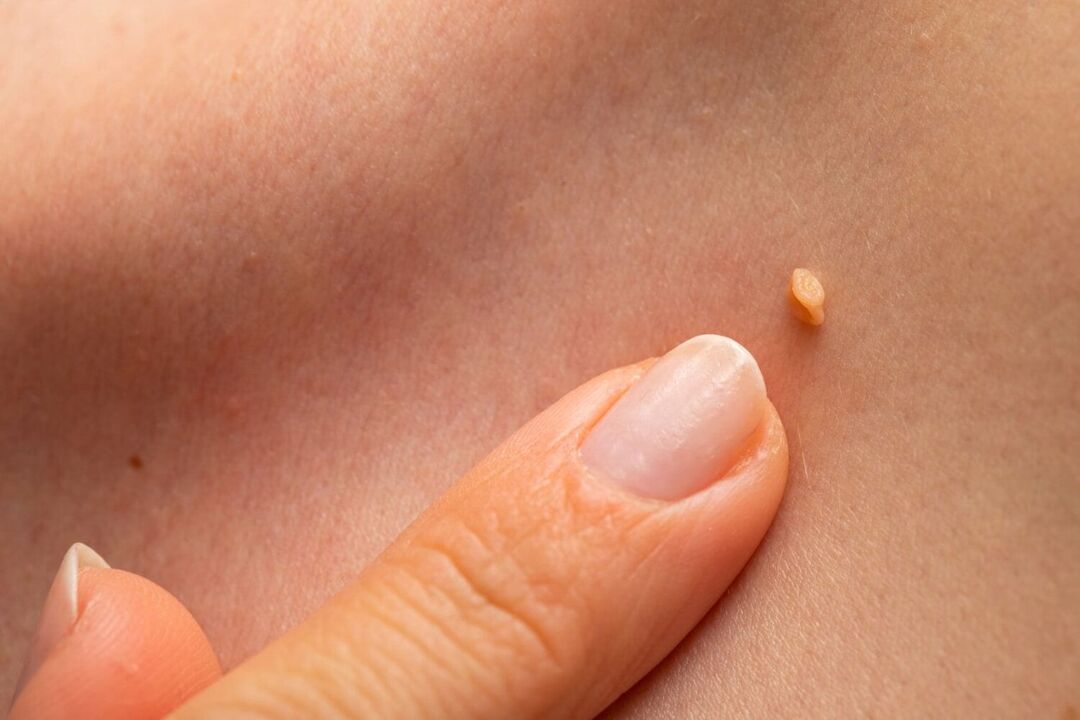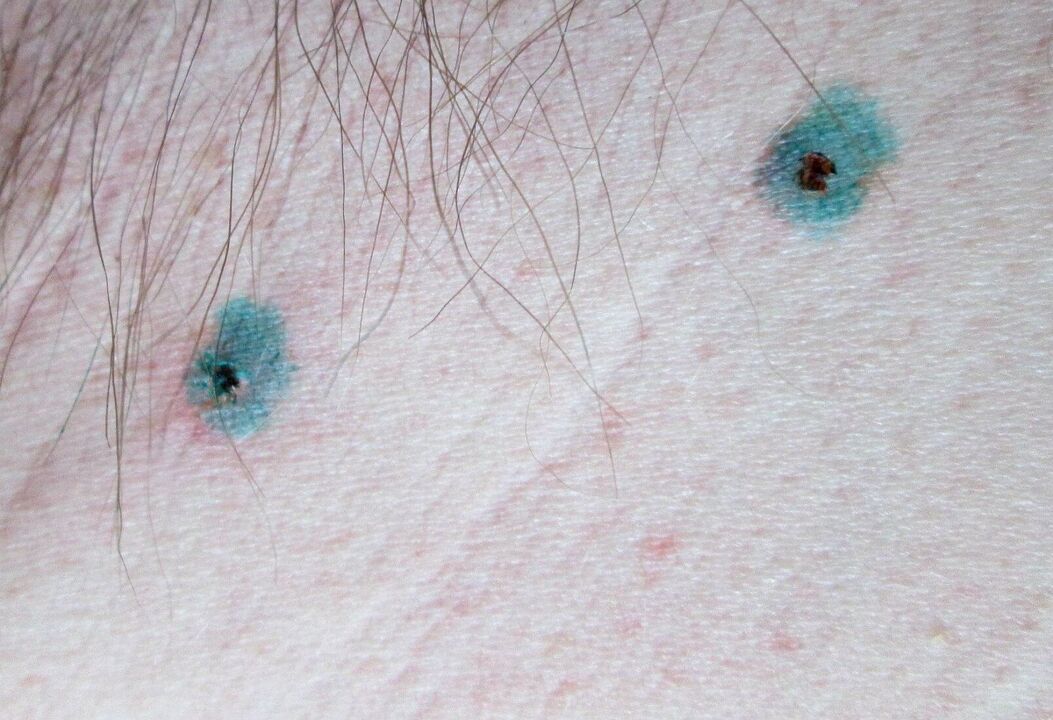Laser removal of papillomas is practically painless and rarely causes complications. You can get rid of an aesthetic defect in one move. But without further drug treatment, the tumors reappear.
Why do papillomas appear and why are they dangerous?
These benign lesions are caused by the human papillomavirus (HPV). They are soft to the touch and can be elongated, round or flat. The shade matches the skin or is slightly darker. The growth does not hurt when pressed, but it looks aesthetic from the outside.
HPV is found in many people's bodies and does not always manifest itself. It is activated under favorable conditions for growth:
- promiscuous sex life;
- hormonal imbalance;
- reduced immunity;
- urogenital infections;
- permanent illnesses;
- improper diet.
The appearance of papillomas is also provoked by radiation treatment, inflammation of the body, poor hygiene, surgical interventions, and the long-term use of antibiotics. The disease occurs in women, men and even babies.

Papillomas develop on any part of the body (on the genitals, eyelids, neck, hands, face). In addition, growths appear on the mucous membranes (tongue, larynx, face). They do not go away on their own and can develop into cancer, such as cervical cancer.
Laser removal of papillomas
The least traumatic way to remove a tumor is laser therapy. The doctor uses a device that generates radiation. In a few minutes, cauterize the papilloma in any area of the skin.
The beam works precisely and does not affect the adjacent tissues.
The procedure is sterile and, if performed correctly, rarely causes side effects. Laser machines are equipped with cooling tips that protect the surrounding tissue from burns.
To whom and when will it be presented?
Most of the time, the growths are not dangerous and are just aesthetic defects. Laser removal of papillomas can be postponed if they do not bother you.
Doctors recommend cauterizing growths, bleeding, and painful tumors. Papillomas on the face, scalp and intimate area must also be removed. A person constantly touches these areas and can damage the growths. If an infection gets into them through the smallest cracks, severe inflammation begins.

Due to the presence of the virus in the body, the pathogenic cells divide uncontrollably, the papillomas grow and can turn into malignant tumors. In case of frequent relapses, dermatologists recommend drug therapy followed by laser removal of all tumors.
Possible contraindications
Before removing the tumor, the doctor collects an anamnesis to identify possible contraindications. The procedure is not carried out if:
- oncology;
- diabetes, blood clotting disorders;
- epilepsy;
- skin sensitivity to light;
- elevated temperature, inflammatory and infectious diseases;
- autoimmune pathologies, tendency to develop keloid scars.
Laser removal of papillomas on the genitals is not recommended during menstruation.
Gynecological consultation is necessary during pregnancy and breastfeeding, as local anesthesia is used during the procedure.
A dermatologist may refuse to treat a patient who has recently tanned or who has a tattoo in the growth area. In some commercial medical facilities, the opinion of a pediatrician is required to allow laser removal of a child's papilloma.
What kind of laser are they using
Devices with continuous and pulsed radiation are suitable for removing tumors. The first option is optimal for cauterizing tumors on the body. The laser with strong radiation vaporizes the pathological cells immediately. But intense exposure may leave a scar.
Pulsed lasers are used to cauterize papillomas on the face, neck, and hands. They have a more superficial effect and do not leave a mark.

You can do the procedure yourself with a laser pen to remove the papilloma. This portable coagulator has 6 power settings and is USB rechargeable. The set includes a wide needle and several thin disposable needles. But it is recommended to use the device only after consultation with a dermatologist and oncologist.
How is laser removal of papillomas performed?
The protocol of the procedure does not depend on the type of laser and the location of the tumor.
What you can and cannot do before the procedure
Do not sunbathe 2 weeks before the laser removal of papillomas.
If the growth is on the face, exclude scrubs and chemical peels from your care. Try to use minimal amount of cosmetic products.
Before the session, a blood test for sexually transmitted diseases must be performed, a smear must be taken from the cervix (women) or the foreskin (men). The doctor can also refer the patient to biopsy, tissue histology and PCR diagnostics. If you get negative tests, laser removal should be postponed and drug treatment should be done first.
Technique
Cauterizing a papilloma takes 1-3 minutes, depending on its size. Before the session, the doctor examines the tumor and determines the optimal laser power. The procedure is as follows:
- The patient wears dark glasses with light filters to protect the eyes from accidental radiation.
- The skin is treated with an antiseptic and an anesthetic ointment is applied for 15 minutes.
- The doctor directs the laser tip at the tumor and vaporizes it layer by layer.
- After the treatment, the treated skin surface is disinfected again and an adhesive patch is applied.
A small papilloma is removed in one session. If the growths are large and located throughout the body, more procedures will be needed. Laser removal of tumors in children follows a similar protocol.
Is laser removal of papillomas painful?
Laser removal of papillomas without local anesthesia will be painful. Before the procedure, the doctor treats the skin with an anesthetic ointment or gives an injection. After that, only a slight burning sensation can be felt during the session.
Before removing growths from sensitive areas (intimate area, eyelids or feet), additional drug pain relief is recommended.
Rehabilitation period
Recovery will be fast if you follow your doctor's recommendations. The next day after the session, remove the adhesive patch and treat the wound with an antiseptic or saturated potassium permanganate solution.
Repeat the procedure twice a day, then apply any healing ointment to the skin.
To avoid infection, do not scratch or pick at the scab. It goes away by itself in 1-1. 5 weeks. Try to moisturize your skin less often. Take a shower, don't bathe. After the spa treatments, carefully dry your body with a towel. If the papilloma was on the face or eyelids, do not use cosmetics for 2 weeks.

During the rehabilitation period, avoid visiting saunas, spas, and swimming pools. Do not shave the treated area, rub it with a washcloth, or use scrubs or other products containing exfoliating particles. If the treatment was done in summer, do not sunbathe on the beach or in the solarium.
Avoid direct sunlight and apply SPF 30-50 before going outside. To avoid excessive sweating, postpone physical activity. Avoid drinking alcohol.
After removing the papilloma from the genitals, it is not recommended to have sex until it is completely healed. Wash with intimate hygiene gel or mild baby soap. Be sure to visit a gynecologist or urologist after the procedure.
Possible complications
Complications rarely occur after laser therapy. If the doctor sets excessive power and incorrectly calculates the exposure time, the damaged area can swell and hurt. The wound starts to suppurate when it becomes infected during rehabilitation due to poor hygiene. The consequence of removing large growths is the formation of keloid scars.
After the laser, papillomas may reappear in even greater numbers. This complication occurs due to the intensive phase of the virus, when cauterization of the growth is ineffective without further therapy.
Pink spots remain at the site of the removed papilloma. They fade after 4-5 days and disappear completely within a few months.
Comparison of laser removal with other methods
In addition to laser therapy, papillomas are cauterized with drugs containing salicylic acid or cantharidin. After 2-3 days, the formation heals and disappears. Preparations containing podophyllotoxin are used to remove growths on the genitals. But this method is less effective and does not exclude relapse.
Surgical removal is also performed with a scalpel. Unlike the laser, this method causes heavy bleeding. A scar may remain on the affected skin area. There is also a high risk of an infection entering the wound.
Papillomas are removed by cryodestruction. The doctor places an applicator containing liquid nitrogen on the tumor for a few seconds. The growth darkens and soon disappears. The procedure is painless, but the depth of the effect cannot be controlled. Therefore, relapses often occur.

The effectiveness of radio wave surgery performed with a special device is comparable to laser therapy. It removes growths, leaves no trace on the body and damages the surrounding tissues to a minimum.
Another effective method is electrocoagulation. The doctor affects the papilloma with high-frequency electric current. During the session, you can adjust the degree of effect. Bleeding and wound infection are excluded. But unlike a laser, the device damages the skin around the growth. Pits are sometimes left after the procedure.
Cost of treatment
The price of laser removal of papillomas starts from 2. 5 dollars per 1 piece. The clinic sometimes reduces the cost if the patient cauterizes multiple growths. Face and eyelid treatments will cost more. Anesthesia is payable separately.
In big cities, the price of laser removal of papillomas on the neck (and other areas of the skin) is 30-50% higher.
Reviews of laser removal of papillomas
Opinions about the consequences of burning out papillomas with a laser are constantly appearing on the forums and websites of medical centers. The efficiency and speed of the procedure should be noted. Due to the anesthesia, the patients felt practically no pain, but there was a burning smell. In most cases, the treatment helped to get rid of the defect. No scars remained, the wounds healed quickly.
But almost everyone noted that laser therapy eliminates only an aesthetic defect. Without drug treatment, the virus will be useless.
Commentators often debate whether it is better to remove papillomas - nitrogen or laser. Many people prefer the second method because it helps the first time.























